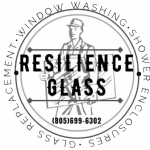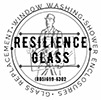Sliding glass doors improve a home’s appearance while allowing natural light, outdoor access, and better energy efficiency, but wear and tear can make sliding glass door replacement necessary. The cost to replace a sliding glass door depends on material type, installation complexity, glass quality, and added features such as built-in blinds or upgraded security locks. Choosing between a budget-friendly vinyl option or a premium impact-resistant design affects overall expenses, making it essential to consider durability, functionality, and long-term value.
Factors That Affect the Cost to Replace a Sliding Glass Door
Several factors influence the total cost of replacing a sliding glass door, ranging from material selection to labor expenses. Prices vary based on door size, customization, and additional features that enhance security or energy efficiency. Evaluating these factors helps homeowners determine the best balance between affordability and long-term benefits.
Material Types
The type of material used for the frame significantly impacts the cost of a sliding glass door. Vinyl offers an affordable option with low maintenance but may lack the premium look of wood or fiberglass. Aluminum provides durability but is less energy-efficient, leading to potentially higher heating and cooling costs. Fiberglass and wood are high-end choices that add visual appeal and insulation benefits but require a larger budget.
Glass Options
The type of glass selected affects the price and performance of a sliding glass door. Standard glass costs less but lacks insulation and impact resistance, making it less effective in extreme weather conditions. Energy-efficient glass with Low-E coatings reduces heat transfer, improving comfort and lowering utility bills. Impact-resistant glass adds protection against storms and break-ins but comes at a higher price.
Door Size and Customization
Larger doors or custom dimensions lead to increased material and labor costs. Standard sizes are more budget-friendly since they are widely available and require minimal adjustments. Custom designs involve specialized manufacturing and installation, including oversized panels or multi-panel configurations. Unique styles like French-style sliding doors also add to the overall cost.
Labor and Installation Complexity
Professional installation costs depend on the difficulty of the replacement process. If an existing door frame is in good condition, installation is quicker and less expensive. Structural modifications, such as resizing the opening or repairing damage, increase labor expenses. Hiring an experienced contractor ensures proper fitting and prevents drafts or poor sliding function.
Additional Features
Upgrades and special features raise the overall price but improve security and convenience. Built-in blinds provide privacy without needing separate window coverings but add to manufacturing costs. Smart locks and advanced security systems enhance safety but require professional installation. Other enhancements, like retractable screens or tinted glass, increase customization expenses.
Permits and Inspection Fees
Local regulations may require permits to replace a sliding glass door, adding to the total cost. Fees vary based on location and the complexity of the installation. Inspections ensure compliance with building codes, especially for energy efficiency and safety standards. Failing to obtain permits may lead to fines or issues when selling the home.
Frame and Structural Modifications
Replacing an old door may involve additional work on the surrounding frame. Rotted or damaged wood requires repairs before installing a new door, increasing labor and material costs. Expanding the opening for a larger door adds expenses due to the need for structural reinforcements. Reinforcing walls to support heavy doors, such as those made of wood or impact-resistant glass, further raises installation costs.
Hardware and Accessories
Handles, locks, and tracks contribute to the final cost of replacing a sliding glass door. Basic hardware options are affordable, but premium materials like stainless steel or decorative finishes increase prices. Upgraded locking mechanisms improve security but require additional investment. High-quality rollers and tracks ensure smooth operation, reducing long-term maintenance expenses.
Energy-Efficient Upgrades
Doors designed to improve insulation help reduce energy bills but come at a higher upfront cost. Low-E glass coatings minimize heat transfer, making indoor spaces more comfortable throughout the year. Multi-pane glass increases thermal efficiency by reducing drafts and preventing heat loss. Weatherstripping and insulated frames enhance energy savings, making them a worthwhile long-term investment.
Average Cost to Replace a Sliding Glass Door
Replacing a sliding glass door involves material costs, labor fees, and optional upgrades, which influence the price. Homeowners typically spend between $2,000 and $4,000, though prices can be as low as $600 for basic models or exceed $10,000 for high-end custom options. Several factors, including door size, frame material, glass type, and installation complexity, determine the final cost.
Standard Sliding Glass Door Cost
A basic six-foot sliding glass door costs between $600 and $1,500. This price covers standard materials like vinyl or aluminum and includes regular glass without extra insulation or security features. Choosing a pre-made model in a standard size helps keep costs low.
Mid-Range Sliding Glass Door Cost
Mid-range sliding glass doors typically cost between $1,500 and $4,000. These options include better materials like fiberglass or wood and energy-efficient glass to improve insulation. Doors in this category often feature enhanced security locks and stronger frames for durability.
High-End Sliding Glass Door Cost
Premium sliding glass doors can cost between $4,000 and $10,000. Custom designs, impact-resistant glass, and luxury materials like solid wood or reinforced aluminum increase prices. Additional features like smart locks, built-in blinds, and advanced insulation also increase costs.
Labor and Installation Costs
Professional installation typically adds $300 to $800 to the total cost. Complex projects requiring structural modifications, custom sizing, or wall reinforcements can increase labor expenses. Hiring an experienced installer ensures proper alignment, smooth operation, and long-term durability.
Additional Features and Customizations
Upgrades like built-in blinds, smart locks, or decorative finishes can increase costs by $150 to $1,500. Energy-efficient coatings and multi-pane glass add insulation benefits but require a more significant investment. Custom handles, upgraded tracks, and retractable screens also contribute to the final price.
Material Costs When You Replace a Sliding Glass Door
Selecting the right material for a sliding glass door affects its cost, durability, and energy efficiency. Each material offers different benefits, with some prioritizing affordability and others focusing on insulation and aesthetics. Comparing these options helps determine what best suits a home’s needs and budget.
Vinyl
Vinyl sliding glass doors cost between $300 and $1,200. This material is affordable, low-maintenance, and energy-efficient, making it a popular choice for homeowners. While durable, vinyl lacks the high-end appearance of wood or fiberglass and may not hold up well in extreme temperatures.
Aluminum
Aluminum frames typically cost $750 to $2,500. Strong and lightweight, this material resists corrosion and requires minimal upkeep, making it ideal for modern designs. However, poor insulation properties can lead to higher energy costs unless thermal breaks or insulated glass is added.
Fiberglass
Fiberglass doors cost between $1,500 and $2,500. Compared to vinyl or aluminum, this material offers superior durability, insulation, and resistance to weather-related damage. The higher price reflects its longevity and ability to mimic the look of wood without requiring extensive maintenance.
Wood
Wooden sliding glass doors cost between $1,000 and $3,000. This material provides a natural, high-end aesthetic and excellent insulation, making it a premium choice. Regular maintenance, including sealing and refinishing, is necessary to prevent warping, rot, or termite damage.
Installation Costs to Replace a Sliding Glass Door
The cost of installing a sliding glass door depends on factors such as labor rates, structural modifications, and the complexity of the replacement. Professional installation ensures a secure fit, proper sealing, and smooth operation, but it adds to the overall expense. Simple replacements cost less, while custom sizing or wall modifications increase labor and material costs.
Standard Installation
Basic installation costs range from $300 to $800. They include removing the old door, preparing the opening, and installing the new one without significant adjustments. Labor fees remain lower when replacing a door of the same size and style as the previous one.
Structural Modifications
Expanding or altering the existing door frame increases installation costs to $1,000 or more. Adjustments may involve widening the opening, reinforcing the structure, or modifying adjacent walls. These changes require additional labor and materials, adding to the overall expense.
Custom or Oversized Doors
Installing a custom or oversized sliding glass door costs between $1,500 and $4,000. Larger panels or multi-panel configurations require additional support and specialized labor. Extra weight from heavy-duty materials like wood or impact-resistant glass increases the complexity of the installation.
Permit and Inspection Fees
Permit costs range from $50 to $300, depending on local building codes. Some areas require inspections to ensure the door meets energy efficiency and safety regulations. Failing to obtain necessary permits can result in fines or complications during future property sales.
Removal and Disposal of Old Door
Removing and disposing of an old sliding glass door costs between $100 and $250. This fee covers labor for dismantling, hauling, and proper disposal of materials. Recycling programs or repurposing options may reduce these expenses.
Additional Expenses When You Replace a Sliding Glass Door
Replacing a sliding glass door often involves extra costs beyond materials and installation. Aside from expenses like upgrades, structural adjustments, and optional features improving security and energy efficiency, there are optional features that need to be added depending on the situation. Factoring in these costs ensures a more accurate budget and prevents surprises during the replacement process.
Built-In Blinds or Shades
Depending on the style and features, integrated blinds or shades cost between $200 and $1,500. These built-in options offer privacy and convenience without needing separate window coverings. Motorized or smart-controlled blinds increase the price but provide added functionality.
Weather proofing and Insulation
Additional weatherproofing measures cost $100 to $500. Caulking, weatherstripping, and insulated frames prevent drafts and improve energy efficiency. Proper sealing reduces long-term heating and cooling costs while protecting against moisture intrusion.
Smart Home Integration
Sliding glass doors with smart home features cost an additional $200 to $1,000. Some models integrate with home automation systems, allowing remote operation and security monitoring. Smart sensors and alarms enhance safety by alerting homeowners to unauthorized access.
Why Knowing Sliding Glass Door Replacement Costs is Important
Replacing a sliding glass door involves more than just swapping old panels for new ones. Material choices, labor fees, structural modifications, and additional features contribute to the final price, making it essential to plan accordingly. Knowing these costs helps homeowners make informed decisions, ensuring the right balance between budget, durability, and long-term value.
Discover cost-effective ways to upgrade your sliding glass door with insights on our Resilience Glass blog.






